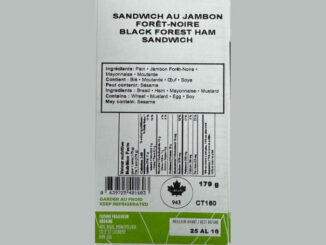
Organic certification verifies that a farm or handling facility complies with the USDA organic regulations. Once certified, a farm or handling facility can sell, label, and represent products as organic. These regulations describe the specific standards required to use the word “organic” or the USDA organic seal on food, feed or fiber products.
What can be certified?
The USDA organic regulations recognize four categories of organic products:
• Crops: A plant that is grown to be harvested as food, livestock feed, fiber or used to add nutrients to the field.
• Livestock: Animals that can be used for food or in the production of food, fiber or feed.
• Processed products: Items that have been handled and packaged (i.e., chopped carrots) or combined, processed and packaged (i.e., soup).
• Wild crops: Plants from a growing site that is not cultivated.
The National Organic Program (NOP) develops the rules and regulations for the production, handling, labeling and enforcement of all USDA organic products. This process, referred to as rulemaking, involves input from the National Organic Standards Board (a Federal Advisory Committee made up of 15 members of the public) and the public. The NOP also maintains a Handbook that includes guidance, instructions, policy memos and other documents that communicate the organic standards.
What requirements do organic products have to meet?
Organic products must be produced using agricultural production practices that foster resource cycling, promote ecological balance, maintain and improve soil and water quality, minimize the use of synthetic materials and conserve biodiversity. Products must be:
• Overseen by a USDA NOP-authorized certifying agent, following all USDA organic regulations
• Produced without prohibited methods, (e.g., genetic engineering, ionizing radiation or sewage sludge)
• Produced using allowed substances
Can a product be labeled “organic” without being certified?
• If you make a product and want to claim that it or its ingredients are organic, your final product probably needs to be certified.
• If you are not certified, you must not make any organic claim on the principal display panel or use the USDA organic seal anywhere on the package. (See exemption below)
• You may only, on the information panel, identify the certified organic ingredients as organic and the percentage of organic ingredients.
What do the organic product labeling rules cover?
• Covers wording allowed on both the front panel and the information panel of a packaged product:
• Principal display panel (PDP): portion of the package most likely to be seen by customers at the time of purchase
• Information panel (IP): includes ingredient statement (list of ingredients contained in a product, from highest to lowest percentage of final product) and other product information
• View complete rules in the “Product Composition” section of the USDA organic regulations
What do the four different organic labels mean?
“100 PERCENT ORGANIC”
• Used to label any product that contains 100% organic ingredients (excluding salt and water, which are considered natural)
• Most raw, unprocessed or minimally processed farm crops can be labeled “100% organic”
• PDP: May include USDA organic seal and/or 100% organic claim
• IP: Identify organic ingredients (e.g., organic dill) or via asterisk or other mark
“ORGANIC”
• Any product that contains a minimum of 95% organic ingredients (excluding salt and water)
• Up to 5% of ingredients may be nonorganic agricultural products and/or nonagricultural products on the National List (nonorganic agricultural products and several nonagricultural products on the National List may only be used if they are not commercially available as organic)
• PDP: May include USDA organic seal and/or organic claim
• IP: Identify organic ingredients (e.g., organic dill) or via asterisk or other mark
“MADE WITH ORGANIC ______”
• Product contains at least 70% organically produced ingredients (excluding salt and water), with a number of detailed constraints regarding ingredients that comprise the nonorganic portion
• PDP: May state “made with organic (insert up to three ingredients or ingredient categories)”; must not include USDA organic seal anywhere, represent finished product as organic, or state “made with organic ingredients”
• IP: Identify organic ingredients (e.g., organic dill) or via asterisk or other mark
“MADE WITH SPECIFIC ORGANIC INDREDIENTS”
• Specific organic ingredients may be listed in the ingredient statement of products containing less than 70% organic contents—for example, “Ingredients: water, barley, beans, organic tomatoes, salt.”
• PDP: Must not include USDA organic seal anywhere or the word “organic”
• IP: May only list certified organic ingredients as organic in the ingredient list and the percentage of organic ingredients; remaining ingredients not required to follow the USDA organic regulations DB
Source: USDA



